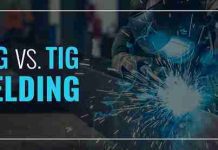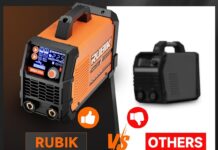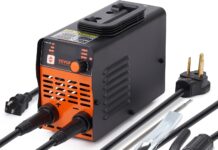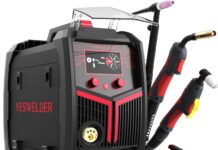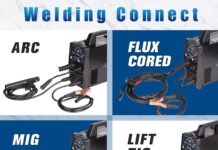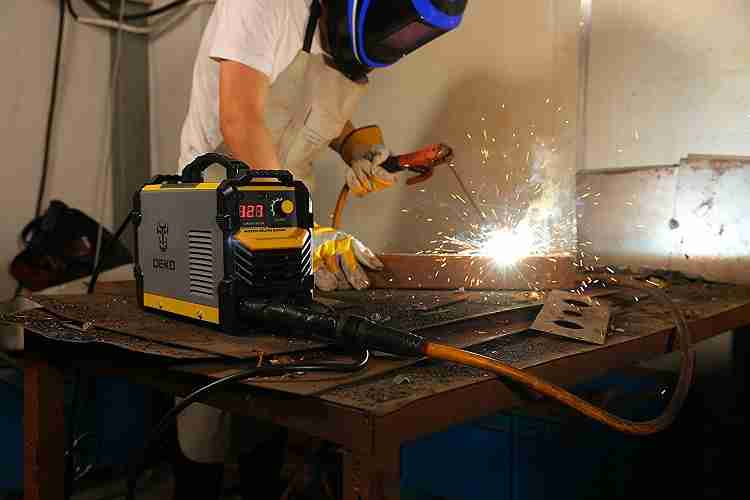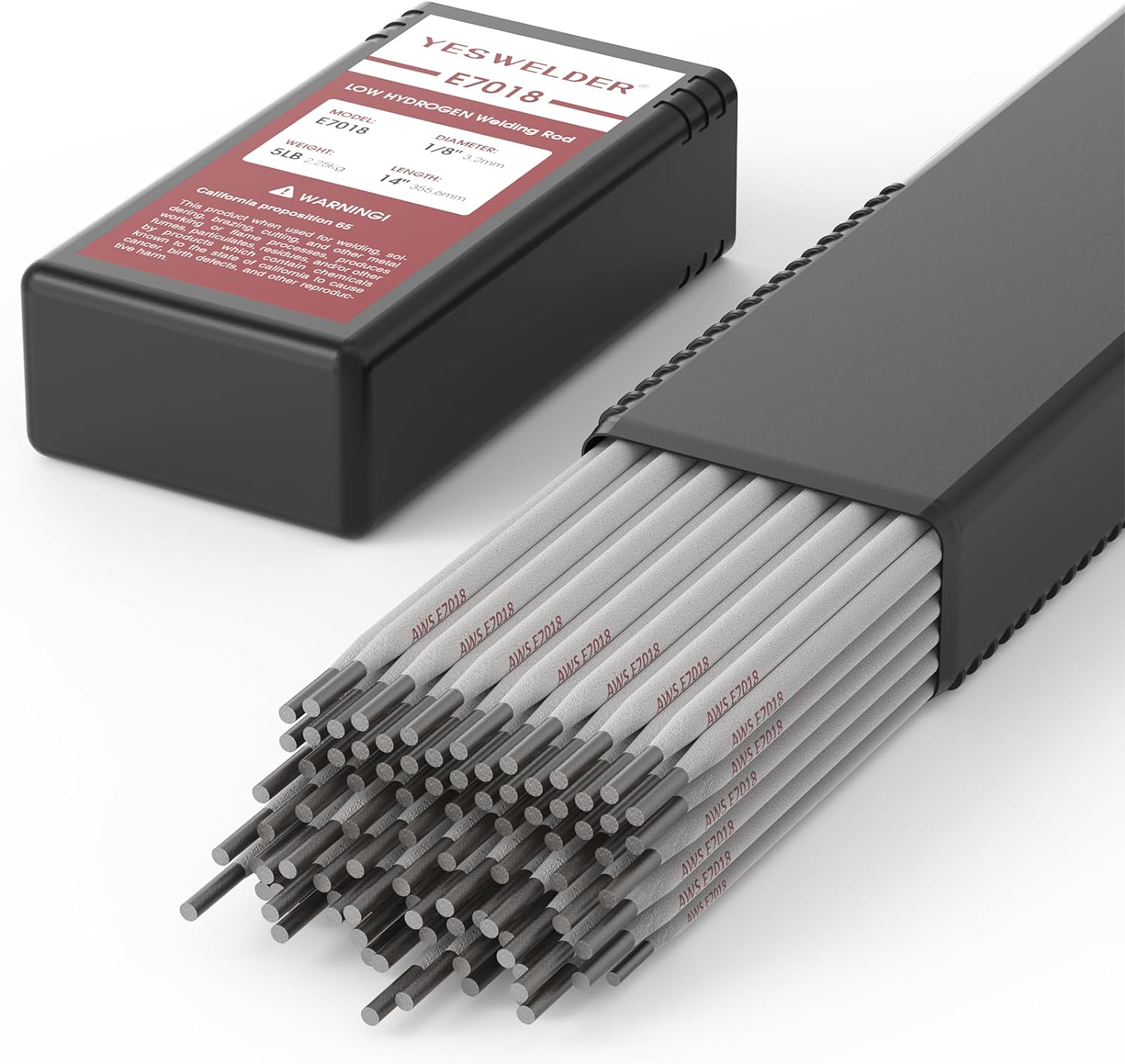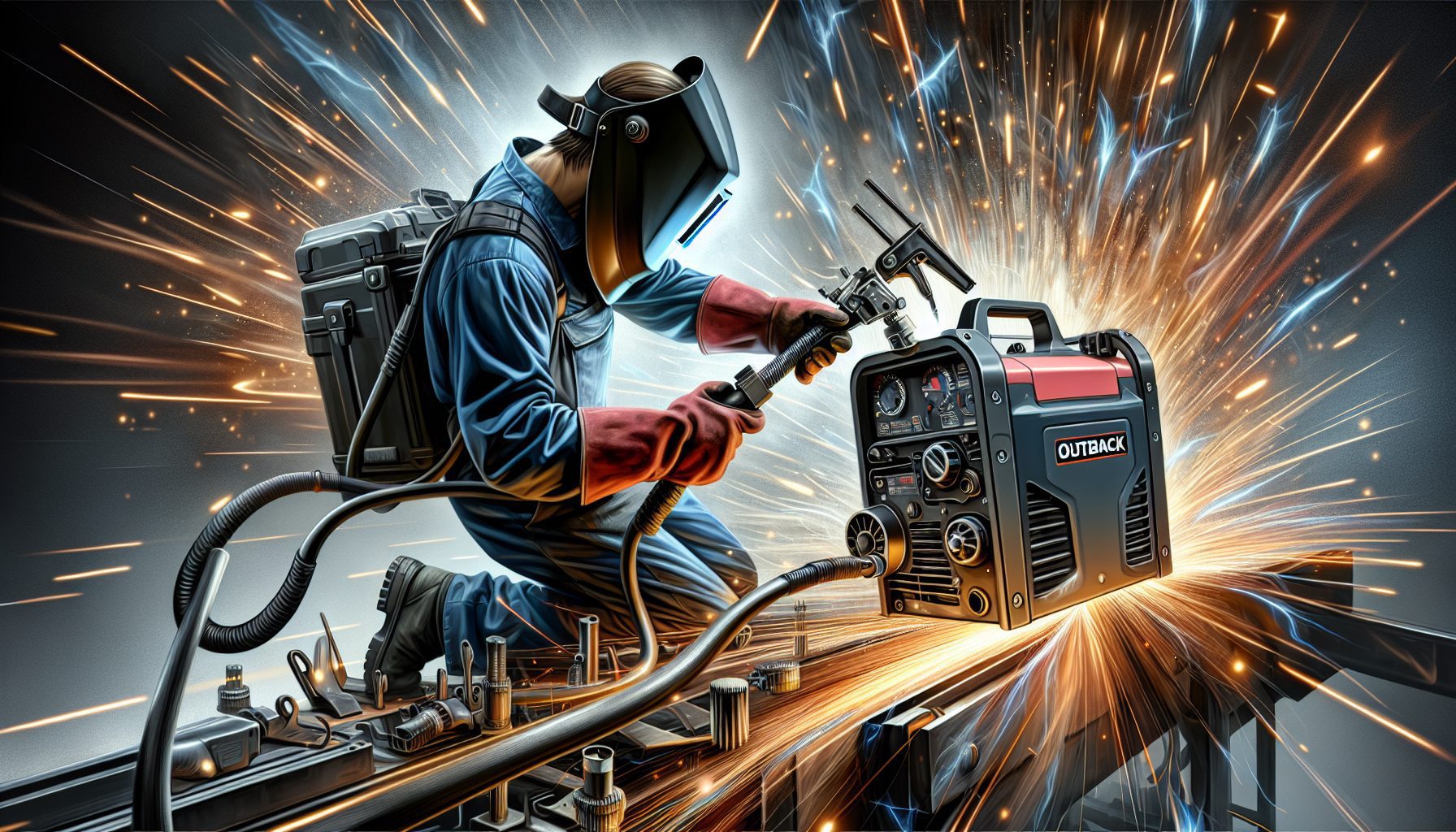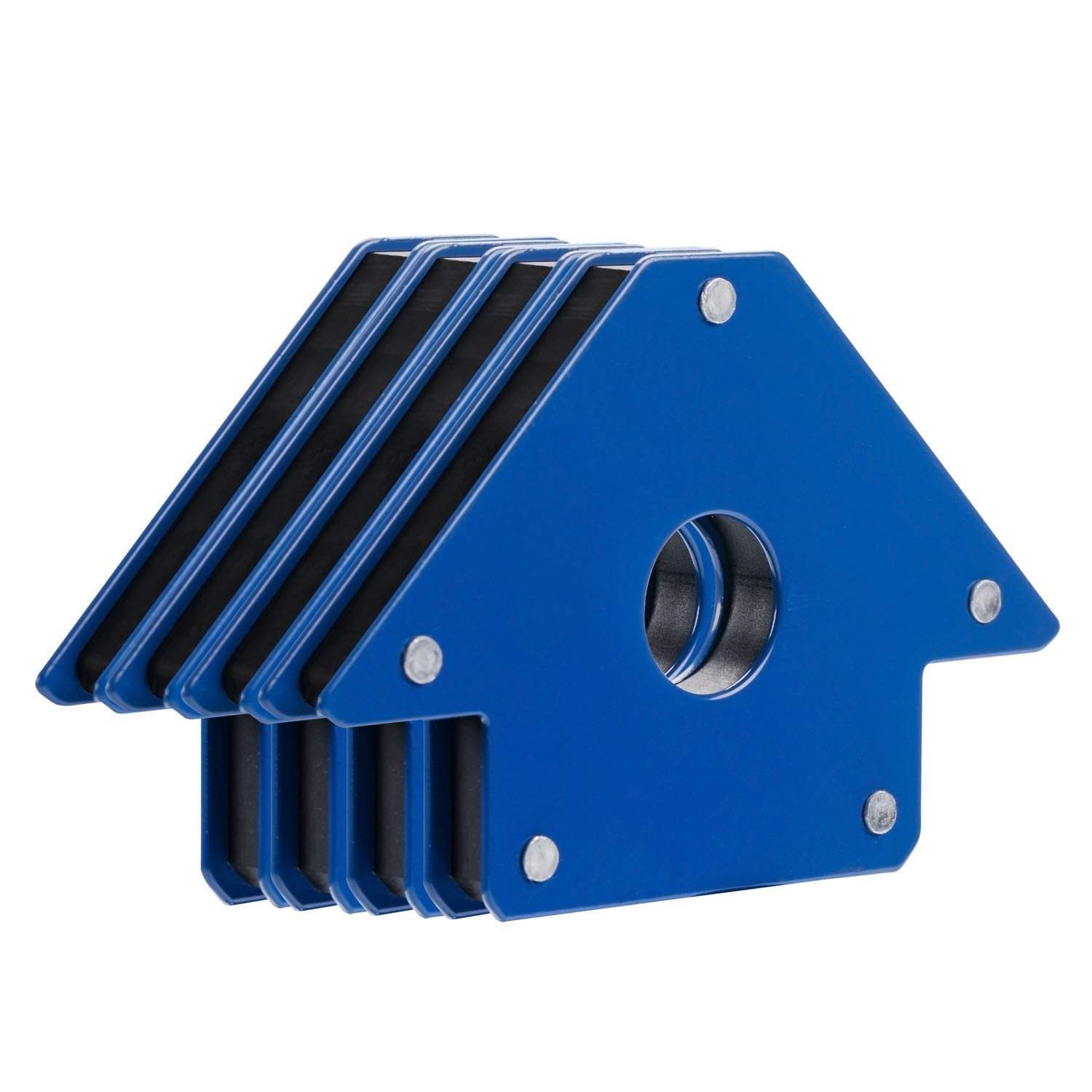Stick welding, a popular welding technique used by both beginners and professionals, is known for its versatility and effectiveness. But have you ever wondered how to start an arc while using this method? In this article, we will explore the step-by-step process of starting an arc with stick welding. From understanding the equipment to mastering the correct technique, we will guide you through the process, ensuring that you can confidently begin your welding journey. Whether you are a novice welder or someone looking to brush up on their skills, we’ve got you covered. Let’s dive in and unlock the secrets to starting an arc with stick welding!
Preparing for Stick Welding
Collecting the necessary equipment
Before we can begin stick welding, it’s important to gather all the necessary equipment. We will need a welding machine, a welding helmet with a dark lens, a pair of welding gloves, a welding jacket or apron, safety glasses, and ear protection. It’s crucial to ensure that all the equipment is in good working condition and properly maintained.
Ensuring proper safety precautions
Safety should always be our top priority when engaging in stick welding. We must make sure to wear appropriate protective gear, such as a welding helmet, gloves, and safety glasses, to protect ourselves from UV radiation, sparks, and flying debris. Additionally, we need to ensure proper ventilation in the welding area and inspect the welding equipment for any defects before starting the welding process.
Prepping the welding surface
Before starting the welding process, it’s crucial to prepare the welding surface properly. This involves removing any rust, paint, or contaminants from the metal surface using a wire brush or grinding tool. It’s also important to ensure that the workpiece is securely clamped to prevent movement during welding.
Selecting the appropriate stick electrode
Choosing the right stick electrode is essential for successful stick welding. The selection depends on several factors, including the type of metal being welded, the thickness of the material, and the desired joint strength. It’s important to consult the manufacturer’s guidelines and recommendations to determine the appropriate stick electrode for the specific welding project.
Setting up the welding machine
Once we have gathered all the necessary equipment and selected the appropriate stick electrode, it’s time to set up the welding machine. This involves adjusting the welding parameters, such as amperage and polarity, according to the manufacturer’s guidelines. It’s important to ensure that the machine is properly grounded and the cables are securely connected before starting the welding process.
Establishing the Welding Arc
Handling the electrode holder and cables
Properly handling the electrode holder and cables is crucial for establishing a stable welding arc. We must ensure that the electrode holder is securely attached to the welding machine and the cables are properly connected. It’s important to inspect the cables for any signs of damage or wear and replace them if necessary.
Creating a stable work position
To establish and maintain a stable welding arc, we need to create a comfortable and stable work position. This involves positioning ourselves in a comfortable stance with our feet shoulder-width apart and maintaining a balanced posture. It’s important to have a firm grip on the electrode holder and maintain a steady hand throughout the welding process.
Initiating the welding arc
To start the welding arc, we have several techniques at our disposal. One technique is to scratch the electrode against the workpiece while simultaneously pressing the electrode holder’s trigger. Another technique is to tap the electrode against the workpiece to create a spark and then quickly lift the electrode to establish the arc. It’s important to practice these techniques and find the one that works best for us.
Maintaining the arc length
Maintaining the proper arc length is crucial for achieving a successful weld. The arc length refers to the distance between the tip of the electrode and the workpiece. It’s important to maintain a consistent arc length throughout the welding process to ensure proper heat input and prevent excessive spatter. A general rule of thumb is to maintain an arc length equal to the diameter of the electrode.
Monitoring the welding puddle
During stick welding, a molten pool of metal, known as the welding puddle, is formed. It’s important to monitor the welding puddle closely to ensure proper fusion and penetration. The size and shape of the puddle can indicate the quality of the weld, and adjustments may need to be made to the welding parameters to achieve the desired results.
Mastering the Arc Starting Technique
Striking the arc by scratching
One common arc starting technique is to scratch the electrode against the workpiece while simultaneously pressing the trigger on the electrode holder. This creates a spark that initiates the welding arc. It’s important to maintain a steady hand and control the scratching motion to prevent excessive sparks and achieve a smooth arc start.
Striking the arc by tapping
Another technique for starting the arc is to tap the electrode against the workpiece to create a spark and then quickly lift the electrode to establish the arc. This technique requires precision and coordination to create a consistent spark and establish a stable welding arc. Practicing this technique will improve our arc starting skills.
Striking the arc with a lift
The lift or lift-arc technique involves touching the electrode to the workpiece and lifting it slightly to initiate the arc. This technique is commonly used when welding thin materials to prevent excessive penetration and distortion. It’s important to lift the electrode smoothly and steadily to establish a stable arc without sticking.
Adjusting the striking technique
The arc starting technique may need to be adjusted depending on the welding project and the specific requirements. For example, when welding materials with high thermal conductivity, such as aluminum, a higher intensity of scratching or tapping may be required to initiate the arc. It’s important to practice and experiment with different techniques to find the most effective approach for each welding situation.
Practicing arc starting
Mastering the arc starting technique requires practice and patience. It’s important to dedicate time to practice starting the arc on scrap pieces of metal before applying the technique to actual welding projects. By practicing, we can refine our skills, improve our consistency, and enhance the overall quality of our welds.
Troubleshooting Arc Start Issues
Arc not starting
If the arc fails to start, there could be several potential issues. One common problem is inadequate contact between the electrode and the workpiece, which can be resolved by adjusting the striking technique or increasing the contact pressure. Another possible issue is insufficient current or incorrect machine settings, requiring adjustments to the welding parameters.
Sticking electrode
A sticking electrode occurs when the electrode becomes fused or stuck to the workpiece, making it difficult to strike or release the arc. This can be caused by a variety of factors, such as incorrect polarity, improper arc length, or using an unsuitable electrode for the material being welded. To address this issue, we need to check and adjust our welding settings accordingly.
Arc wandering or extinguishing
An arc that wanders or extinguishes during the welding process can be frustrating and detrimental to the quality of the weld. This can be caused by improper arc length, excessive electrode angle, contaminated electrode or workpiece, or inadequate shielding gas flow. By correcting these factors and maintaining proper technique, we can ensure a stable and consistent arc throughout the welding process.
Excessive spatter
Spatter refers to the tiny molten metal droplets that scatter during the welding process. Excessive spatter can be caused by factors such as improper voltage or current settings, incorrect electrode angle, or contaminated electrode or workpiece. Minimizing spatter can be achieved by adjusting the welding parameters, cleaning the electrode and workpiece, and practicing proper technique.
Inconsistent arc length
Inconsistent arc length can lead to uneven welds and inconsistent penetration. This can be caused by factors such as improper electrode angle, inconsistent travel speed, or varying workpiece thickness. By maintaining a steady hand, controlling the travel speed, and ensuring a consistent electrode angle, we can achieve a uniform and consistent arc length for optimal weld quality.
Maintaining a Proper Arc
Maintaining a steady hand
A steady hand is essential for maintaining a proper arc and achieving precise, uniform welds. It’s important to hold the electrode holder firmly and avoid excessive movement or shaking. By practicing maintaining a steady hand, we can enhance our control and produce high-quality welds.
Controlling travel speed
The speed at which we move the electrode along the joint, known as the travel speed, affects the weld’s appearance and quality. It’s important to maintain a consistent travel speed to ensure proper heat input and fusion. When moving too quickly, the weld may lack penetration, while moving too slowly can lead to overheating and distortion. Finding the right balance and practicing control will result in solid, well-formed welds.
Avoiding excessive weaving
Weaving, or moving the electrode from side to side during the welding process, can be beneficial in certain situations, but excessive weaving should be avoided. Excessive weaving can lead to uneven weld deposits, potential undercutting, and poor fusion. It’s important to maintain a smooth and controlled weaving motion, keeping it within a reasonable range for the desired joint width.
Preventing the arc from going out
During stick welding, it’s crucial to prevent the arc from extinguishing. An arc going out can lead to unsightly welds, insufficient penetration, and potential defects. To prevent the arc from going out, we need to maintain proper arc length, ensure adequate contact between the electrode and workpiece, and adjust the welding parameters as needed. Additionally, practicing proper arc starting techniques and maintaining a stable work position can help keep the arc consistently ignited.
Monitoring the electrode angle
The angle at which the electrode is held in relation to the workpiece, known as the electrode angle, plays a significant role in weld penetration and appearance. By monitoring and adjusting the electrode angle, we can achieve the desired weld characteristics. It’s important to refer to the welding specifications and practice maintaining a consistent and appropriate electrode angle for each welding project.
Safety Tips for Stick Welding
Wearing appropriate protective gear
When engaging in stick welding, it’s crucial to wear the appropriate protective gear to minimize the risk of injury. This includes a welding helmet with a dark lens to shield our eyes from the intense UV radiation, welding gloves to protect our hands from sparks and heat, safety glasses to safeguard our eyes from flying debris, and appropriate clothing, such as a welding jacket or apron, to protect our skin from burns and sparks.
Ensuring proper ventilation
Proper ventilation is essential to maintain a safe and healthy working environment during stick welding. Welding produces fumes and gases that can be hazardous if inhaled, such as ozone, nitrogen dioxide, and hexavalent chromium. It’s important to work in a well-ventilated area or use local exhaust ventilation systems to remove fumes and maintain clean air quality.
Inspecting welding equipment
Before starting any welding project, it’s crucial to inspect the welding equipment for any defects or malfunctions. This includes checking the electrode holder, cables, and welding machine for any signs of damage, wear, or loose connections. Any faulty equipment should be immediately repaired or replaced to ensure safe and reliable operation.
Taking fire prevention measures
Welding involves the use of intense heat and sparks, creating a potential fire hazard. To prevent fires, it’s important to clear the welding area of any flammable materials and have a fire extinguisher readily available. It’s also advisable to have a fire watch or standby individual to monitor the surroundings during and after welding to promptly address any potential fire hazards.
Being cautious of electric shock
Stick welding involves working with high currents and voltages, which poses a risk of electric shock. To avoid electric shock, it’s crucial to ensure that the welding machine is properly grounded and all electrical connections are secure. It’s also important to avoid touching the electrode or other live parts of the welding machine while welding. By following proper safety precautions, we can minimize the risk of electric shock.
Post-Welding Cleanup and Inspection
Allowing the weld to cool down
After completing the welding process, it’s important to allow the weld to cool down naturally. This allows the metal to solidify and ensures that the weld does not undergo any thermal stress or distortion. Rushing the cooling process by quenching the weld with water or other cooling agents can result in cracks or other weld defects.
Removing slag and spatter
Slag and spatter are byproducts of stick welding that need to be removed after the welding process. Slag is the solidified flux that covers the weld bead, while spatter refers to the small molten metal droplets that adhere to the surrounding area. The slag can be chipped or brushed off using a slag hammer or wire brush, while spatter can be removed with a chipping hammer or wire brush.
Inspecting the weld bead
After removing the slag and spatter, it’s important to inspect the weld bead for any defects or imperfections. This includes checking for proper fusion, penetration, and the consistency and appearance of the weld. It’s advisable to compare the weld bead to the applicable welding standards and specifications to ensure that it meets the required criteria.
Performing non-destructive testing
In certain cases, non-destructive testing (NDT) may be required to ensure the quality and integrity of the weld. NDT methods, such as ultrasonic testing, magnetic particle inspection, or penetrant testing, can detect internal or surface defects that may not be visible to the naked eye. If necessary, consulting with a qualified NDT technician can help identify and address any potential issues.
Cleaning the welding area
After completing the post-welding inspection, it’s important to clean up the welding area. This involves removing any debris, unused electrodes, and empty flux containers. Cleaning the area not only maintains a tidy work environment but also reduces the risk of accidents caused by tripping over clutter or slipping on loose materials.
Tips for Improving Stick Welding Skills
Practicing on various materials and positions
To improve stick welding skills, it’s important to practice on a variety of materials and in different positions. Each material and joint configuration presents unique challenges that require different techniques and adjustments. By exposing ourselves to various welding scenarios, we can enhance our adaptability and competency as stick welders.
Experimenting with different electrodes
Stick welding offers a wide range of electrode options, each designed for specific applications and materials. To expand our welding skills, it’s beneficial to experiment with different electrodes and understand their characteristics. By trying out various electrode types, we can familiarize ourselves with their strengths, limitations, and optimal settings for different welding scenarios.
Seeking guidance from experienced welders
Learning from experienced welders is a valuable way to improve stick welding skills. Seeking guidance from those with extensive welding knowledge and expertise can provide invaluable insights, tips, and techniques. Whether through mentorship, attending welding workshops, or participating in welding forums and communities, tapping into the collective wisdom of experienced welders can significantly enhance our capabilities.
Continuously improving technique
Stick welding is a skill that requires continuous improvement and refinement. By actively seeking feedback, reflecting on our welding performance, and identifying areas for improvement, we can refine our technique. Regularly reviewing welding standards and industry best practices can also provide guidance on proper technique and help us achieve higher-quality welds.
Learning from welding mistakes
Mistakes happen, even to the most skilled welders. Instead of being discouraged by mistakes, we should embrace them as opportunities for growth and learning. Analyzing welding mistakes, understanding their causes, and implementing corrective actions will prevent similar errors in the future. The ability to learn from mistakes is a critical aspect of improving stick welding skills.
Common Stick Welding Mistakes to Avoid
Insufficient penetration
Insufficient penetration occurs when the weld fails to adequately fuse with the base metal. This can be caused by factors such as low welding current, fast travel speed, incorrect electrode angle, or using an unsuitable electrode for the material being welded. To avoid insufficient penetration, we must ensure proper welding parameters, maintain a consistent travel speed, and select the appropriate electrode for the application.
Lack of weld reinforcement
Weld reinforcement refers to the amount of weld metal that extends beyond the joint, providing additional strength and support. A lack of weld reinforcement can weaken the joint and lead to premature failure. Proper electrode manipulation, maintaining a suitable electrode angle, and achieving sufficient weld size can help ensure adequate weld reinforcement.
Improper weld size
An improper weld size can greatly impact the strength and quality of the joint. Welds that are too small may lack sufficient strength, while excessively large welds can result in heat distortion and wasted consumables. It’s important to follow welding specifications and guidelines to achieve the correct weld size for the specific application.
Incomplete fusion
Incomplete fusion occurs when the weld metal does not fully fuse with the base metal or previous weld passes. This can result in weak or brittle joints. Incomplete fusion can be caused by factors such as improper heat input, excessive travel speed, or inadequate cleaning of the joint. To ensure complete fusion, we must maintain proper welding parameters, control the travel speed, and ensure a clean and properly prepared joint.
Incorrect electrode selection
Selecting the wrong electrode for the material being welded can lead to various welding issues, including poor penetration, excessive spatter, and improper fusion. It’s important to consult the electrode manufacturer’s recommendations and consider the material type, thickness, and desired joint strength when selecting the appropriate electrode. Using the correct electrode for the specific application will greatly improve the quality and integrity of the weld.
Seeking Professional Training and Certification
Benefits of professional training
Seeking professional training in stick welding offers numerous benefits. Professional training provides comprehensive knowledge of welding principles, techniques, and safety practices. It offers hands-on experience under the guidance of experienced instructors, allowing us to learn proper welding techniques and correct any bad habits. Additionally, professional training provides valuable certifications that can enhance career prospects and demonstrate our competence as welders.
Finding welding classes or workshops
Welding classes and workshops are excellent opportunities to further our stick welding skills. Many technical schools, community colleges, and vocational training centers offer welding programs that cover various welding processes, including stick welding. These classes provide structured instruction, practical hands-on experience, and opportunities to learn from qualified instructors and other aspiring welders.
Obtaining welding certifications
Obtaining welding certifications is a valuable accomplishment that verifies our skills as stick welders. Many industries, such as construction, manufacturing, and aerospace, require welders to hold specific certifications to ensure quality standards are met. Certifications typically involve performance tests and evaluations conducted by qualified inspectors. By obtaining welding certifications, we can expand our career opportunities and demonstrate our expertise to employers and clients.
Joining welding communities
Joining welding communities, both online and offline, offers a wealth of knowledge, support, and networking opportunities. Online forums, social media groups, and welding associations provide platforms to engage in discussions, ask questions, and learn from experienced welders. Local welding groups or organizations may also organize workshops, seminars, or welding competitions, where we can connect with fellow welders and gain valuable insights and inspiration.
Exploring career opportunities
Stick welding skills open up a wide range of career opportunities. Industries such as construction, manufacturing, automotive, and shipbuilding all rely on skilled stick welders. By continuously improving our stick welding skills, obtaining relevant certifications, and building a strong professional network, we can explore rewarding career paths and secure stable employment in the welding industry.
In conclusion, stick welding is a versatile and essential welding process that requires proper preparation, technique, and safety precautions. By collecting the necessary equipment, establishing a stable welding arc, mastering arc starting techniques, troubleshooting common issues, and maintaining a proper arc, we can achieve high-quality welds. It’s important to prioritize safety, continuously improve our skills, and seek professional training and certifications. With practice, dedication, and a commitment to learning from mistakes, we can become proficient stick welders, opening up a world of opportunities in the welding industry.



